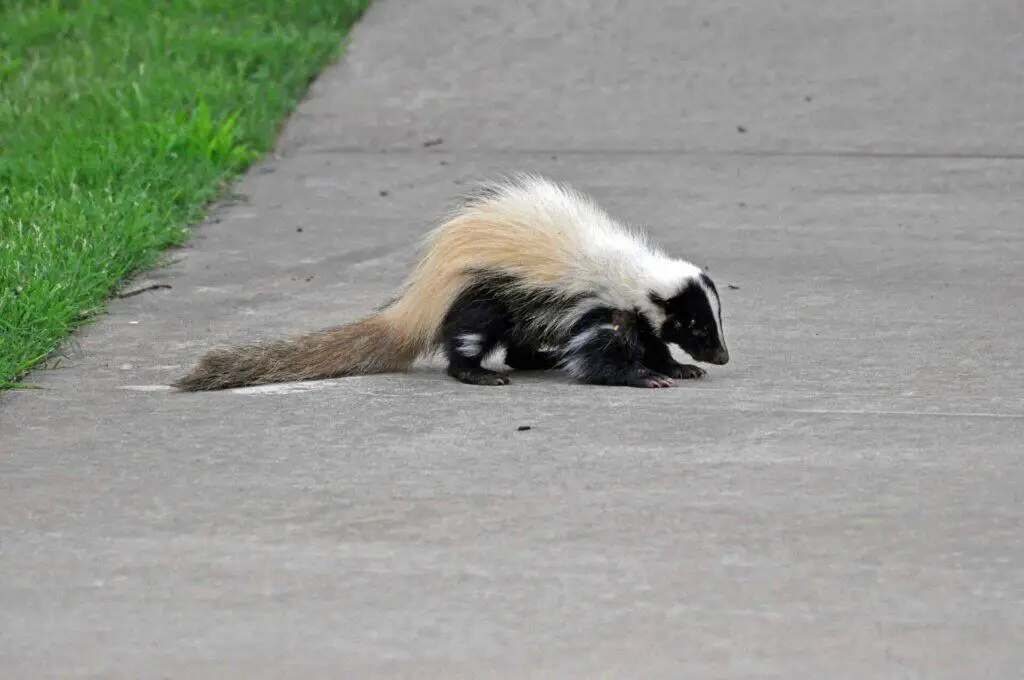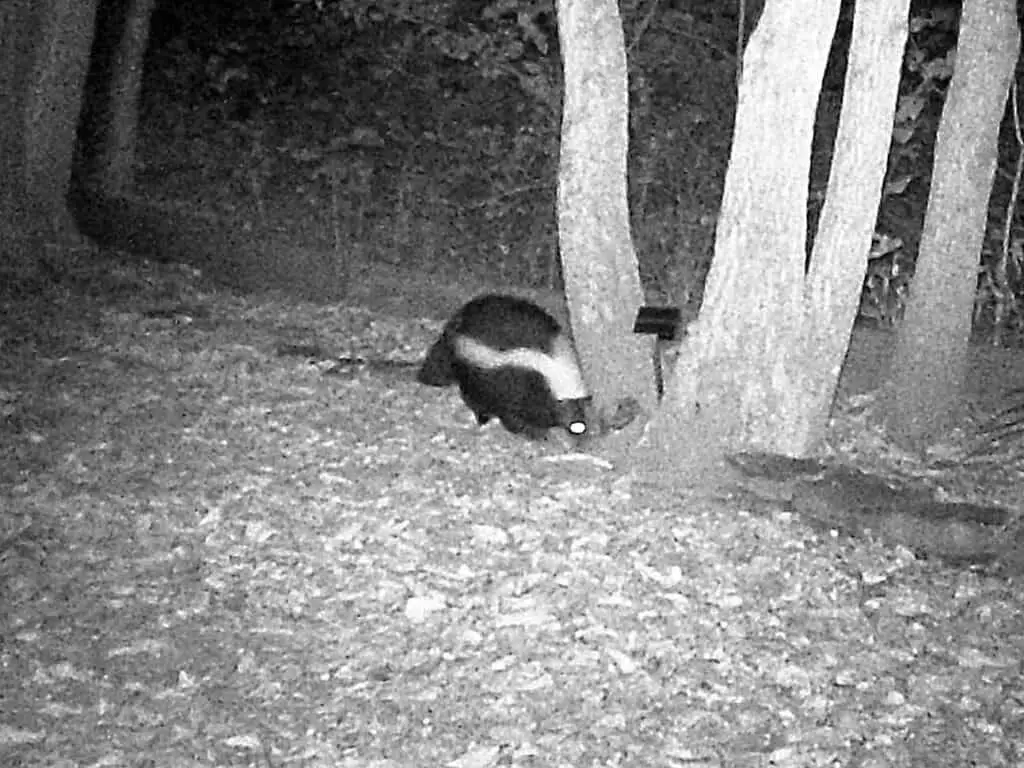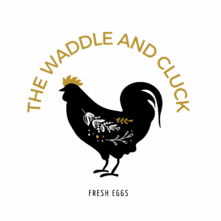There are two kinds of skunks in the area, the spotted skunk and the striped skunk. Although both kinds are found throughout the United States, the only one I’ve ever seen, either on our property or killed along the roadway, has been the striped skunk. Both are nocturnal, although the striped skunk may be seen during daylight hours on overcast days. Both sometimes carry rabies or distemper.
The spotted skunk is small, with a body smaller than that of a cottontail rabbit; the tail makes it look larger. It’s an attractive little carnivore, black with spotted stripes across its back and sides. Spotted skunks are excellent climbers and will often go up trees to escape danger.

The striped skunk is the one we usually see. It’s the size of a house cat and has a white stripe on its forehead, which divides at the shoulders and continues down the back as two white lines to a dark bushy tail. There’s a great deal of variation in the amount of white on the back, which can be seen in the two attached photos. The daylight picture shows a skunk with a back that’s completely white, whereas the nighttime picture, taken with a trail camera using infrared light, shows a skunk with its back mostly black and the white stripes running down the sides. It has the typical markings of a striped skunk.

The skunk in the daylight photo had distemper and was at our house for two days before it died. I buried it so that other animals wouldn’t encounter it and become infected with the highly contagious viral disease, which occurs in dogs, skunks, raccoons, and a wide variety of other mammals.
Many years ago, while hiking in the North Woods of Tulsa’s Mohawk Park, Becky and I encountered a raccoon with distemper. It’s head was down and it just walked around in a circle. We mentioned it to security on our way out.
An animal with either distemper or rabies loses its fear of humans. A skunk or a raccoon with rabies tends to be aggressive. One with distemper is likely to be passive. In both cases of distemper that we saw, moisture was dripping from the nose of each animal. The virus is present in the nasal discharge and saliva of an infected animal.
Skunk FAQ
What are skunks?
Skunks are carnivorous mammals primarily found in North America, known for their distinctive black and white fur and powerful defensive spray[1][4]. There are four species native to North America: the striped skunk (most common), eastern spotted skunk, hooded skunk, and hog-nosed skunk[4].
What do skunks look like?
- Body size similar to a house cat (20-30 inches long)
- Weight ranges from 6-10 pounds
- Short, stocky legs with large feet and well-developed claws
- Prominent white stripes on a black fur background (for striped skunks)[3][4]
What do skunks eat?
Skunks are omnivores with a diverse diet:
- Insects (beetles, grasshoppers, crickets)
- Small mammals (mice, voles)
- Birds and bird eggs
- Berries, fruits, and vegetables
- Opportunistic hunters that will also scavenge[2][5]
When are skunks active?
- Primarily nocturnal and crepuscular (active at dawn and dusk)
- Less active during winter months
- Breed between February and April
- Females typically have 4-7 offspring called “kits”[1][5]
How do skunks defend themselves?
- Warning signs before spraying: stomping feet, clicking teeth, raising tail
- Spray is a last resort defense mechanism
- Can spray accurately within 10 feet
- Spray contains sulfur-based compounds called thiols
- Can spray 5-6 times before needing to replenish (takes 8-10 days to refill)[2][5][6]
Interesting Skunk Facts
- Can make various sounds: squealing, chirping, whimpering, grunting
- Average lifespan in the wild is 2-4 years
- Have a keen sense of smell and hearing, but poor eyesight
- Can run up to 10 miles per hour[2][6][7]
How to deter skunks?
- Use motion-sensitive lights and sprinklers
- Seal small openings under decks and sheds
- Remove potential food sources
- Avoid direct confrontation[6]
Citations:
[1] https://www.413pestfree.com/blog/2022/august/answering-the-most-commonly-asked-questions-abou/
[2] https://www.iowadnr.gov/About-DNR/DNR-News-Releases/ArticleID/1699/Cool-things-you-should-know-about-skunks-yes-skunks
[3] https://thomaspestservices.com/blog/post/common-questions-about-skunks
[4] https://www.havahart.com/skunk-facts
[5] https://www.awsfzoo.com/skunks/
[6] https://thefurbearers.com/blog/five-facts-you-need-to-know-about-skunks-in-your-neighbourhood/
[7] https://www.terminix.com/skunks/learn-about/








